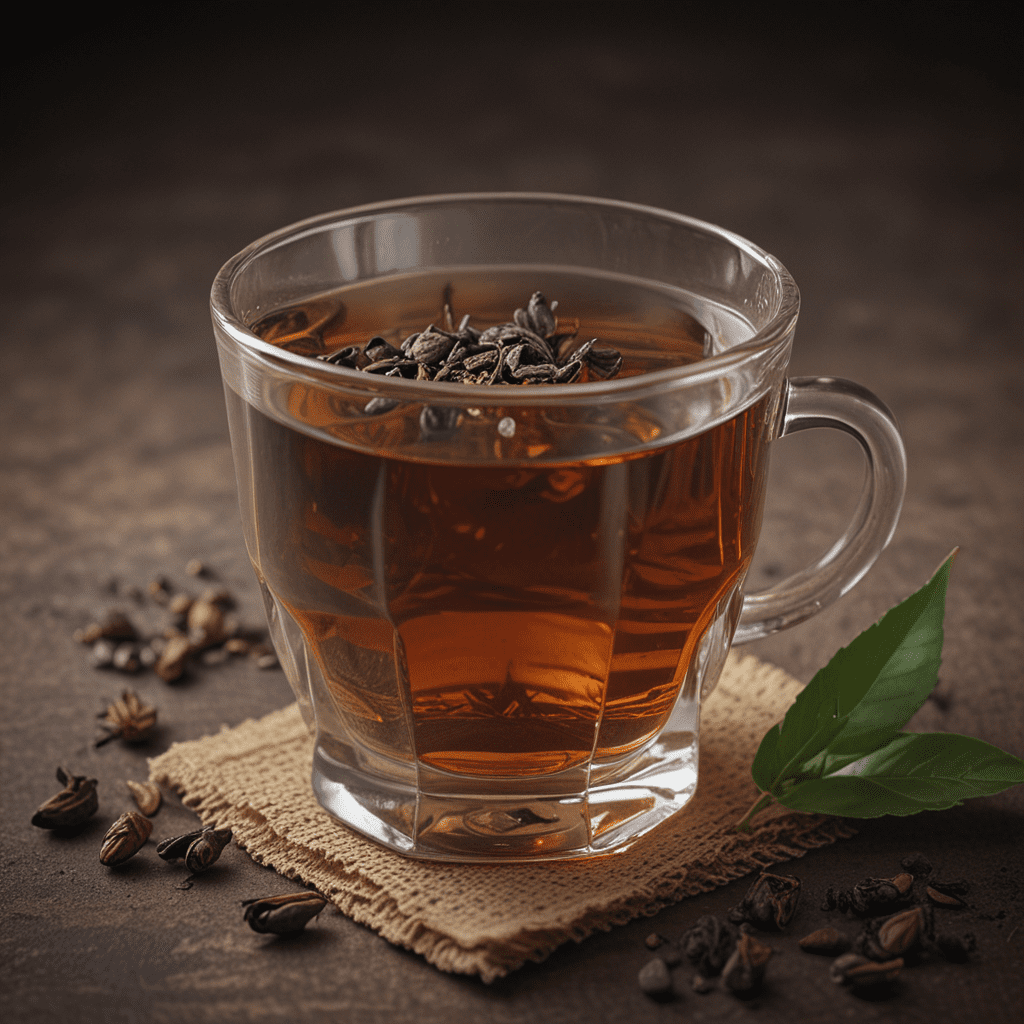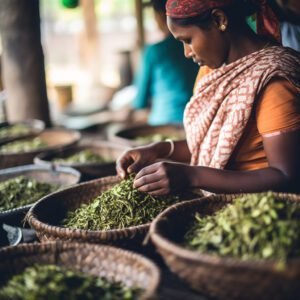Assam Tea: A Taste of Authenticity
1. Introduction: The Allure of Assam Tea
Indulge in the captivating world of Assam tea, a beverage that embodies the rich cultural heritage and natural wonders of India's Brahmaputra Valley. Assam tea, renowned for its robust flavor and distinctive malty notes, has captivated tea enthusiasts worldwide. Embark on a journey to discover the allure of this exceptional tea, uncovering its origins, flavors, and the traditions that have shaped its global popularity.
2. The Origin and History of Assam Tea
Assam tea traces its roots to the indigenous tea trees found in the Brahmaputra Valley region. The British first discovered these trees in the 19th century, recognizing their potential for commercial cultivation. In 1839, the first commercial tea garden was established in Assam, marking the beginning of a thriving industry that would shape the region's economy and cultural identity.
3. The Brahmaputra Valley: A Fertile Landscape
The Brahmaputra Valley provides an ideal environment for Assam tea cultivation. The fertile soil, abundant rainfall, and warm temperatures create optimal conditions for the tea plants to flourish. The valley's unique geography, nestled between the Himalayan foothills and the Brahmaputra River, further contributes to the distinct flavor profile of Assam tea.
4. Varieties of Assam Tea: A Spectrum of Flavors
Assam tea encompasses a range of varieties, each offering a unique sensory experience. The most notable types include:
CTC (Crush, Tear, Curl): A full-bodied, robust tea with a strong malty flavor.
Orthodox: A more refined tea, characterized by its delicate floral notes and complex flavor profile.
5. The Tea Plantations: A Verdant Tapestry
Assam tea plantations are a sight to behold. Acres of lush green tea bushes cover the landscape, creating a verdant tapestry that stretches as far as the eye can see. The rhythmic plucking of tea leaves by skilled workers adds to the enchanting ambiance of these plantations, a testament to the enduring tradition of Assam tea cultivation.
6. The Tea-Making Process: From Leaf to Cup
The journey of Assam tea leaves from the plantation to your cup involves a meticulous process that preserves its unique flavors and characteristics. After harvesting, the leaves undergo several stages of processing:
Withering: The leaves are spread out to reduce moisture, enhancing their flavor and aroma.
Rolling: The leaves are rolled to break down their cell structures, releasing their essential oils.
Oxidation: The rolled leaves are exposed to air, triggering an enzymatic reaction that develops the tea's distinctive flavor profile.
- Drying: The oxidized leaves are dried to halt the oxidation process and stabilize their flavor.
7. Unique Characteristics of Assam Tea
Assam tea stands apart from other teas due to its exceptional characteristics:
Robust Flavor: Assam tea boasts a full-bodied, malty flavor, making it a favorite among those who prefer a strong and invigorating brew.
High Caffeine Content: Assam tea is known for its high caffeine content, providing an energizing boost that can help you power through the day.
Health Benefits: Assam tea is rich in antioxidants, which have been linked to numerous health benefits, including reduced inflammation and improved heart health.
8. Health Benefits of Assam Tea
Beyond its delicious taste, Assam tea offers an array of health benefits:
Antioxidant Properties: Assam tea is a rich source of antioxidants, including flavonoids and catechins, which help protect the body against free radical damage.
Anti-Inflammatory Effects: The antioxidants in Assam tea have anti-inflammatory properties, which may help reduce inflammation throughout the body.
Improved Heart Health: Studies have suggested that regular consumption of Assam tea may lower cholesterol levels and reduce the risk of heart disease.
9. Assam Tea in the Global Marketplace
Assam tea has gained significant popularity in the global marketplace, becoming a staple in households and tea shops worldwide. Its robust flavor and versatility make it suitable for a variety of brewing methods, from traditional teapots to modern tea infusers.
10. The Cultural Significance of Assam Tea
In Assam, tea is more than just a beverage; it is an integral part of the region's cultural fabric. The aroma of Assam tea permeates the air, uniting communities and creating a sense of shared heritage. The tea plantations, with their rolling green hills and skilled workers, have become iconic symbols of Assam's identity.
FAQs
What is the difference between CTC and orthodox Assam tea?
CTC (Crush, Tear, Curl) Assam tea undergoes a mechanical processing method that results in a strong, full-bodied brew. Orthodox Assam tea, on the other hand, involves a more delicate hand-rolling process, producing a tea with a refined and complex flavor profile.
How can I get the best flavor from Assam tea?
To fully appreciate the rich flavor of Assam tea, use freshly drawn water heated to around 195 degrees Fahrenheit (90 degrees Celsius) and steep the tea leaves for 3-5 minutes.
Is Assam tea good for health?
Assam tea is a healthy beverage rich in antioxidants and beneficial compounds. It has been linked to various health benefits, including reduced inflammation, improved heart health, and boosted immunity.



